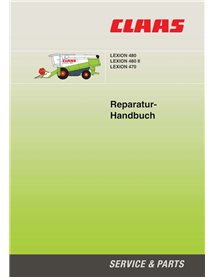Shopping Cart
There are no more items in your cart
CLAAS LEXION SERVICE AND OPERATOR'S MANUALS
The wide range of service, owner’s, workshop, repair, parts and operator's manuals would facilitate repairs and maintenance of Claas machinery and equipment. If you are looking for a detailed guide and instructions to repair Claas equipment these manuals will definitely help you. Read operating instructions and precaution highlighted in the manuals before you operate or service Claas equipment. All the information, illustration and specification in manuals are based on the latest information at the time of publications. PDF manuals previews available for free download. PDF documents are available instantly after payment.











